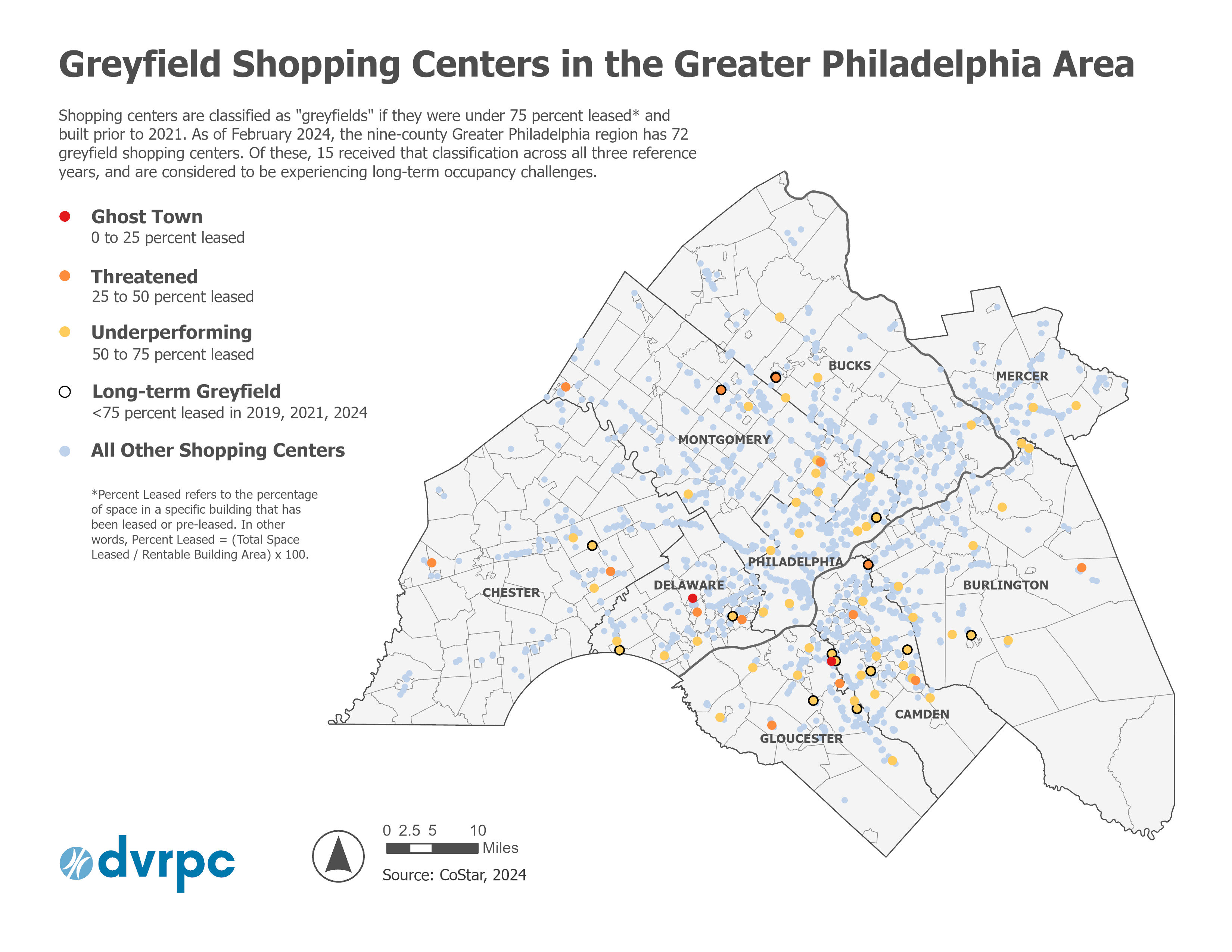A brownfield is a property that is abandoned or underutilized because of either real or perceived contamination. Definitions from relevant agencies include:
United States Environmental Protection Agency (U.S. EPA) Brownfields are real property, the expansion, redevelopment, or reuse of which may be complicated by the presence or potential presence of a hazardous substance, pollutant, or contaminant.
State of New Jersey: A brownfield is defined under New Jersey state law (N.J.S.A. 58:10B-23.d) as "any former or current commercial or industrial site that is currently vacant or underutilized and on which there has been, or there is suspected to have been, a discharge of a contaminant."
Commonwealth of Pennsylvania: The main Pennsylvania program that administers brownfields programs is called the Pennsylvania Land Recycling Program or Act 2.. The Land Recycling program allows for the cleanup and reuse of contaminated industrial and commercial properties. The Land Recycling Program allows contaminated properties to be redeveloped for new purposes.
DVRPC’s long range plan prioritizes the reuse and cleanup of underutilized land in the region’s older suburbs and communities. Brownfields and greyfields offer communities the opportunity to diversify their economy and housing options.
Are There Brownfields in Your Community?
Abandoned industrial sites are easily recognized as brownfields. However, communities should also be aware of the less-apparent brownfield sites that, if reused, present community and economic development opportunities. Examples of sometimes-overlooked brownfields include:
- Abandoned or underutilized gas stations
- Former automobile service facilities
- Vacant lumber yards
- Former transportation depots or transfer facilities
- Abandoned storage sites
Is this property a Brownfield or a Greyfield?
Brownfields should be distinguished from greyfields. Greyfield is a term used to describe formerly-viable retail and commercial shopping sites (such as malls and shopping centers) that have been abandoned as newer commercial developments draw shoppers away. Usually, there is very little commercial activity at a greyfield site, or all tenants have vacated the premises, leaving only empty buildings behind. Greyfields take their name from the vast asphalt parking lots that typically dominate these abandoned sites. The main difference between a brownfield and a greyfield is that a brownfield is (or is perceived to be) contaminated, whereas a greyfield is underutilized only due to disinvestment.
Where are Greater Philadelphia’s Greyfields?
In order to identify where greyfields are located across Greater Philadelphia, shopping centers are classified as "greyfields" if they are under 75 percent leased and built prior to 2021. As of February 2024, the region has 72 greyfield shopping centers, 15 of which are considered to be experiencing long-term occupancy challenges.

More information on the region’s greyfields can be found in Greyfield Shopping Centers of Greater Philadelphia.
What Can Local Governments Do To Facilitate Reuse of Brownfields?
Utilize the National Brownfield Site Search and/or New Jersey Brownfields GIS Inventory by listing publicly-controlled brownfields that are available for redevelopment. Private owners of contaminated properties should be encouraged to list their properties on these resources as well.
Develop and maintain municipal brownfield inventories as part of local comprehensive planning efforts.
Provide local tax incentives (abatements, tax increment finance districts, etc.) that make the remediation and reuse of brownfield properties more attractive to developers.
Contact the New Jersey Brownfields Assistance Center or the Pennsylvania Brownfields Incentives and Programs to begin the redevelopment process.
Additional Resources
Brownfield Resource Guide: Funding and Technical Assistance for Remediation and Reuse
Reclaiming Brownfields: A Primer for Municipalities
Reclaiming Brownfields: Municipal Implementation Tool #010
Redesigning Shopping Centers in the Delaware Valley: From Greyfields to Community Assets
First Generation Suburbs: Putting Principle into Practice Municipal Funding Resource
Brownfields and the Infrastructure Investment & Jobs Act (IIJA)
The Infrastructure Investment & Jobs Act (IIJA) has allocated $1.5 billion to increase community brownfields revitalization efforts. Abandoned, contaminated sites across all parts of the country can be assessed, cleaned, and made available for reuse. Learn more about programs available from the U.S. EPA.
The Comprehensive Environmental Response, Compensation, and Liability Act (CERCLA) Brownfields Amendments authorize EPA to provide training and technical assistance to communities. Additional information regarding brownfields and the IIJA is provided on DVRPC’s IIJA webpage.